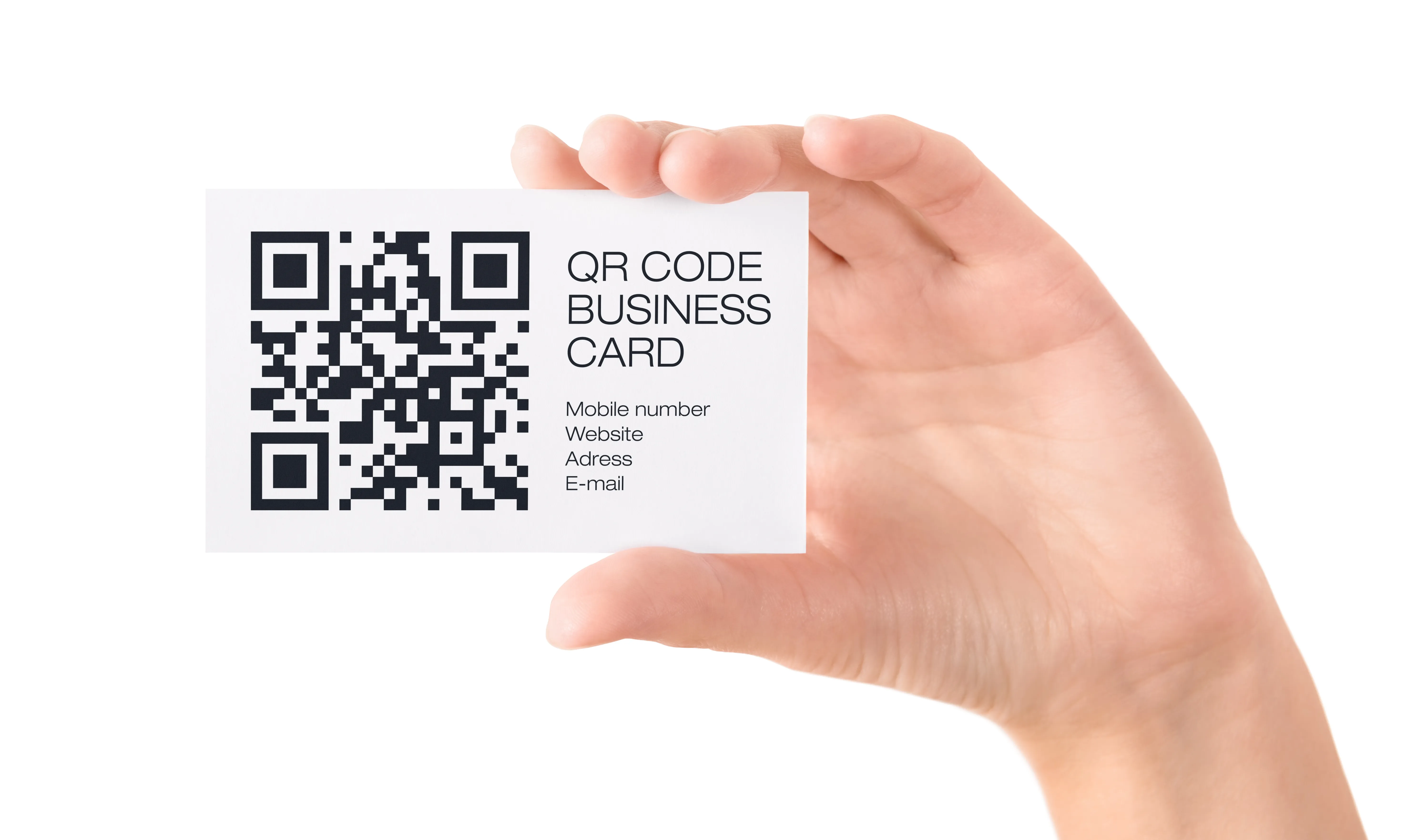How To Create A Digital Business Card For Modern Networking

Business cards have been a quick way to exchange contact information and profiles between businesses and customers. However, the age of paper business cards is fading fast. They're bulky, and store less information, and the COVID-19 pandemic meant that the ritual of handing paper business cards is a thing of the past. In fact, a study shows that pre-Covid, over 27 million cards were being printed per day, which is no longer the case. Digital business cards oftentimes utilize QR technology for ease of sharing contact information. A notable aspect is the choice between a static QR Code and a dynamic one, each offering distinct advantages depending on your needs. Static codes are fixed and store specific information that can't be modified once created. On the other hand, dynamic QR codes can be updated with new details without changing the code itself, making them versatile.
Does this mean that business cards are no longer important? Of course not. Currently, businesses are shifting to digital cards. These cards use QR or Near Field Communication (NFC) technology to store contact information. The upgrade makes the cards shareable, stores more information, and makes information updates seamless. Moreover, it lessens the environmental impact of processing and printing cards.
Below, we'll discuss what it takes to create a digital business card for your modern networking needs. Read on for top insights:
Choosing a Good Platform
The first step in setting up your digital business cards is to find a reputable platform that can easily create a business card for you. Currently, there are several services that offer card creation. But remember, not all will meet your required standards or have the features that you need for your card. So, filter between different platforms until you find the right one.
A rule of thumb is to start with a card that supports free QR code scanning. This is because these codes can hold a wealth of information without affecting the design or the size of your card. Secondly, the platform should support personalization features. That way, you can include your headshot, logo, and customizable designs. Additionally, consider design flexibility, analytics capabilities, the ability to manage contacts within the platform, and any associated costs.
What to Include in Your Digital Business Card
Think of your digital business card as a handshake in the online world. Just like a traditional card, the goal is all about making a connection. That means the must-haves are the same: your name, what you do, your company, and how to get in touch via email and phone. Those are the basics that let people know how to reach out.
But why stop there? Let's make it shine! Add a friendly headshot, your company logo, and social media links where people can check out your work. A quick tagline or a short bio makes it personal – think of it as telling them what you're passionate about.
Want to make it even easier? A QR code on your card is like a shortcut! Embed some extra info about yourself or your business. At a busy event? No worries - people can just point their phone camera at the code and boom, they have all the extra details about you. It's the perfect way to make connecting a breeze!
Designing for Visual Impact

Remember, your digital business card is an extension of your professional brand. People interacting with the business card should be able to visualize your business brand through the colors, design, and logo. Therefore, prioritize a clean, uncluttered design that's easy to read on various screen sizes. Use colors and fonts consistent with your company's branding or your overall professional aesthetic.
Secondly, use a high-quality profile picture is essential. Choose an image that conveys professionalism and approachability—this visual element will linger in the minds of potential connections. However, there are some common headshot mistakes that people often make. This includes unnatural skin tone and color, overemphasizing facial features, and authentic loss. Ensure that you look natural in your headshots so that people can easily relate to and connect the picture to a person.
Sharing and Networking Strategies
One of the greatest assets of a digital business card is the ease of sharing. After creating your card, you can embed your card's link or QR code into your email signature, website, and social media profile. This ensures that each email, personal and business channel carries your contact information.
Placing the contact link or QR code strategically in different platforms can help increase your reach and get more contacts. Statistics show that in the US, there were 98.7 million smartphone users who used a QR code scanner on their device in 2024. Taking advantage of such a number gives you an opportunity to target a higher number.
Additionally, if your chosen platform supports NFC (Near-Field Communication) technology, leverage it at networking events. Let others tap their phones on your device for contactless sharing.
Utilize the Power of Analytics
Many digital business card platforms offer analytics that reveals who has viewed your card and when they accessed it. This level of visibility is impossible with traditional paper cards. Knowing who is interested in your profile provides a starting point for targeted follow-up and potential collaborations.
Imagine attending a networking event and exchanging cards. With a digital card, you'll know exactly who took a genuine interest and went further to explore your information. This gives you a clear direction for meaningful follow-up communication. You can craft your messages to suit different segments such as (those who viewed my profile) and (those who didn't)
Analytics often go beyond simple views, showing you which sections of your card garnered the most attention. Did people click through to your portfolio, or did they just watch your introductory video? This information tells you what content resonates with your audience, and how best to tailor it to deliver more returns on your outreach campaign.
Updating Your Information with Ease
Traditional business cards present a problem the moment your information changes. Promotions, new phone numbers, or switching companies can result in a stack of outdated cards which can portray an unprofessional image. Additionally, your contacts will not be able to reach them, and printing and distributing new cards could be wasteful.
This hassle is non-existent with digital business cards. Your online profile can be adjusted at any time. Since people access your card via a unique link or code, any updates you make are instantly reflected for everyone who has already saved your information.
Maintaining an up-to-date digital business card reflects your dynamism and attention to detail. It ensures potential contacts always have the most accurate way to reach out. This is especially crucial in fast-moving industries, where roles and contact details can change rapidly.
Conclusion
Digital business cards are better than paper cards in every way imaginable. They're effortlessly created, shared, and maintained. Their interactive features make them far more engaging than static paper cards. By embracing digital business cards, you'll enhance your networking efforts and leave an unforgettable, tech-savvy impression on everyone you connect with.